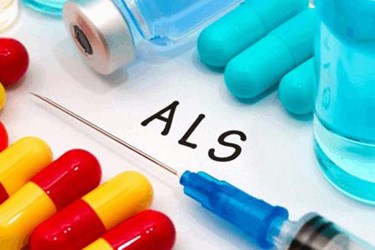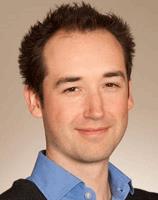PatientsLikeMe And Duke Bring Novel Approach To ALS Trial

By Ed Miseta, Chief Editor, Clinical Leader

ALS, also known as Lou Gehrig’s disease in the U.S., is a neurological condition typically affecting adults in their 50s or 60s. Patients will first notice weakness and a loss of muscle bulk in their arms and legs. This is typically followed by a rapid loss of muscle function and death in two to five years. In the U.S., there are around 25,000 ALS patients at any one time.
Currently, only one ALS treatment, Riluzole, has been licensed in the U.S. This treatment only slows the progression of the disease and does not provide patients with any relief. “This is a terrible condition and an incredible burden for family members and caregivers as well,” says Paul Wicks, VP of Innovation for PatientsLikeMe. “For that reason, patients are highly motivated to take part in research. Unfortunately, there are not that many trials for them to participate in.”
The dearth of trials is partially due to the number of failures of neurological drugs in general, as well as poor results of ALS drugs that have actually been tried on patients. With larger trials now costing hundreds of millions, if not billions of dollars, even potentially effective ALS treatments would be very expensive to bring to market.
A New Treatment And A New Approach
 This is where a new protein treatment called Lunasin enters the picture. Lunasin is a peptide found in soy, barely, wheat, and rye. Since 1996 it has been the subject of clinical research focusing on cancer, cholesterol, cardiovascular disease, and inflammation.
This is where a new protein treatment called Lunasin enters the picture. Lunasin is a peptide found in soy, barely, wheat, and rye. Since 1996 it has been the subject of clinical research focusing on cancer, cholesterol, cardiovascular disease, and inflammation.
“Lunasin was part of a research investigation called ALSUntangled, which was a consortium that involved around 100 researchers, clinicians, patients, and caregivers,” says Wicks. “PatientsLikeMe is involved. Patients are able to submit therapies they would like us to investigate. The therapies could be anything they heard about or read about on the Internet. We investigate these therapies, look at the science and results behind them, and write our findings in a paper. The findings are published for anyone to see on the ALSUntangled website.”
Lunasin was brought to the attention of PatientsLikeMe after ALS patient Mike McDuff claimed to have a big reversal of the disease after receiving several treatments of Lunasin. Since no treatment is known to reverse the disease, claims of this type are generally attributed to a misdiagnosis. In this case, three experts backed up his claims of the reversal, but the results were not vigorously tested. The challenge for PatientsLikeMe was whether it could develop a study that would more rapidly and inexpensively determine if Lunasin was an effective treatment. There were also a couple of aspects of clinical trials that it hoped to improve upon.
“With ALS, no patient wants to be on a placebo,” says Wicks. “Any of these patients participating in a trial want to get the actual treatment. That alone would cause many patients to shy away from a trial featuring placebos. Therefore we wanted to make sure every participant receives the active treatment. Additionally, as the muscular functions of these patients deteriorate, it becomes more difficult for them to come to a clinic to take part in a trial. Driving, parking, and sitting in a waiting room can be difficult to ALS patients. To make this study a success, we knew those two concerns had to be addressed.”
Home Evaluations Ease Burden On Patients
For this study, all of the participants would have to make a visit to the Duke ALS Clinic to be screened, get a baseline reading, and be consented for the trial. Each one would receive the Lunasin (a safe, nutritional supplement) and then perform 12 months of online follow-up via PatientsLikeMe. The patients will fill out evaluation forms and complete a rating scale via the website. The evaluation forms contain 12 questions regarding speech, swallowing, walking, breathing, and other health metrics. They are the same questions a clinician would ask patients during a trial. The only difference is patients are reporting the information themselves.
At the end of the 12-month study, patients will come to the Duke ALS Clinic for one additional visit to have a final evaluation performed. The protocol allowed both concerns of patients to be met as clinical visits were reduced and all participating patients would be taking the active treatment.
One additional feature of the trial is that all data would be live for everyone to see. Anyone can go to the trial website and see the data and how the patients feel the treatment is working for them. This is very different from the more common blinded studies where patients do not know if they are on a placebo, do not get to see their data, do not get to talk to anyone about their results, and do not get to see data from other participants.
Another win that came out of this study is that enrollment is not limited. Wicks notes patients will often agree to participate in a trial, only to find out that there is not an open spot for them. For this trial only 50 patients were desired, since ALS patients generally get worse, and the study was looking for major improvements. But Duke and PatientsLikeMe went the extra step of making the entire protocol available to anyone who wanted to see it. By doing so, patients who do not get into the trial will be able to read the protocol, purchase the Lunasin, take the recommended dosage, and still report their data on the PatientsLikeMe website.
“If you were to go to a sponsor company and recommend they run a trial in this manner, I think you would hear their heads pop,” adds Wicks. “This is a very unique trial that worked better than we could have imagined. It is the fastest enrolling trial in ALS history and because of the ease of entering data, we expect the retention rates to be very high as well. We are also communicating with the patients electronically and giving them updates on the trial. At this point, we are hoping for big effects and look forward to patients having Mike McDuff levels of improvement.”
The study certainly is groundbreaking from a patient centricity perspective and continues to showcase Duke as an innovator in changing the paradigm of clinical trials. But what may be of even greater interest to sponsors is the cost reductions that have already been realized. Wicks states this study is being done for less than one percent of the cost of a traditional trial. If what has been built by Duke and PatientsLikeMe is a repeatable infrastructure, then treatments that might eventually fail in a large and expensive Phase 3 trial could perhaps be excluded a lot faster. At the same time, the broad inclusion criteria could also cause recruitment rates to be pushed much higher. That alone should be enough to make everyone sit up and take notice.
